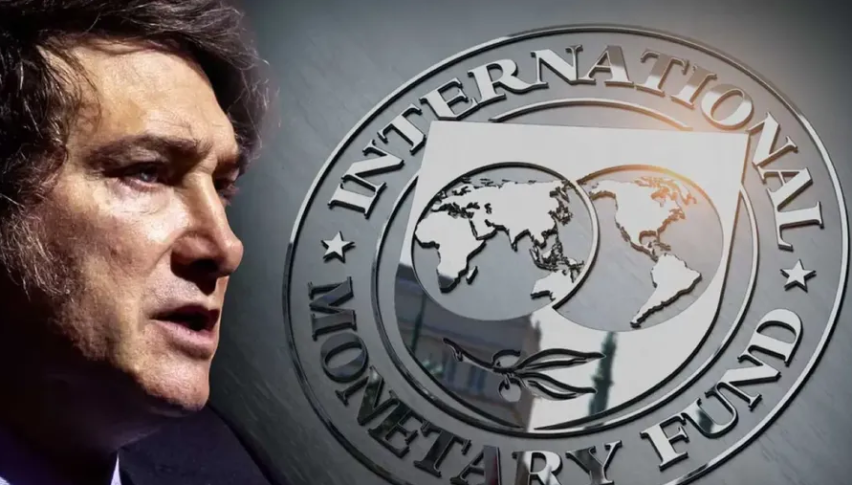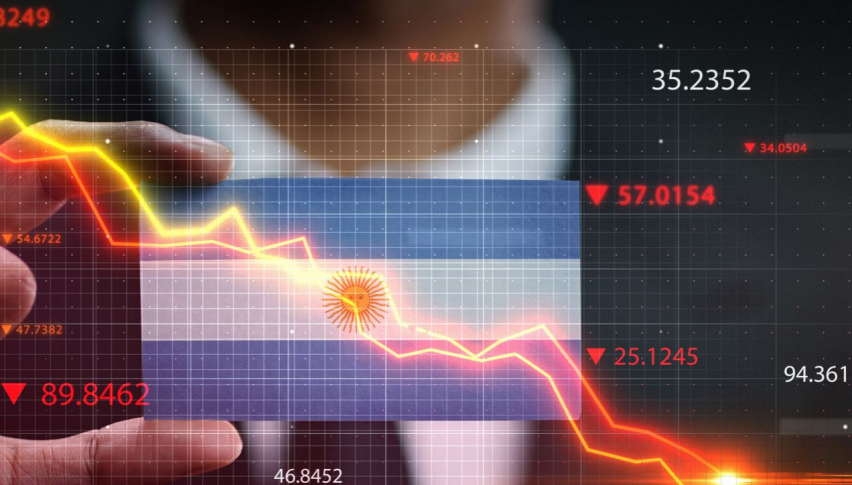Argentine Stocks Drop Nearly 5% on Wall Street
Argentina’s country risk, measured by J.P. Morgan, rose 4 points to 616 basis points. Argentina wants to issue bonds to roll its debt.

Quick overview
- Dollar-denominated bonds fell in New York, with Argentina's country risk remaining above 600 basis points.
- Argentine ADRs dropped as much as 5% on Wall Street, while the S&P Merval declined below 2,000 points in dollar terms.
- Local equities mostly closed lower, with Grupo Supervielle leading the decline at -5.5%.
- Argentina's country risk rose to 616 basis points, indicating ongoing challenges in regaining access to international debt markets.
Dollar-denominated bonds fell in New York on Monday, while Argentina’s country risk remained above 600 basis points.

Argentine ADRs dropped as much as 5% on Monday, November 17, on Wall Street, while the S&P Merval declined and slipped below 2,000 points in dollar terms. With this move, the Buenos Aires stock market ended the positive streak it had posted late last week following the announcement of a trade framework agreement between Argentina and the U.S. Bonds also closed lower, and country risk held above the 600-point threshold.
The S&P Merval fell 2.3% to 2,926,870.5 points, and in dollar terms it retreated 2.9% to 1,959 points.
Local equities mostly closed in the red, led by Grupo Supervielle (-5.5%), Edenor (-5.1%), and Banco Macro (-4.6%). On the upside, Transportadora de Gas del Sur gained 4% and Transener rose 2.1%.
On Friday, the main index of the Buenos Aires Stock Exchange had jumped 3.8% after confirmation of the trade framework agreement with the U.S. According to market sources, the index found support around the 2,000-point area following the strong post-election rally.
In New York, ADRs also posted losses of up to 5%, driven by Edenor, followed by Grupo Supervielle (-4.2%) and Banco Macro (-3.2%). In contrast, IRSA climbed 1.8% and Cresud rose 1.1%.
Bonds and Country Risk
In fixed income, Global bonds issued under foreign law closed with broad declines of up to 0.3%, led by the Global 2046. Bonares, issued under Argentine law, traded mixed.
Argentina’s country risk, measured by J.P. Morgan, rose 4 points to 616 basis points.
The government’s victory in the October elections had been accompanied by an improvement in expectations, boosting hopes of regaining access to international debt markets in the near term and supporting the performance of hard-currency sovereign curves. Analysts note that a country-risk level close to 400 bps would likely provide a comfortable path back to markets. Around 500 bps, the government could potentially return to markets with some form of “sweetener” to refinance short-term maturities.
- Check out our free forex signals
- Follow the top economic events on FX Leaders economic calendar
- Trade better, discover more Forex Trading Strategies
- Open a FREE Trading Account

